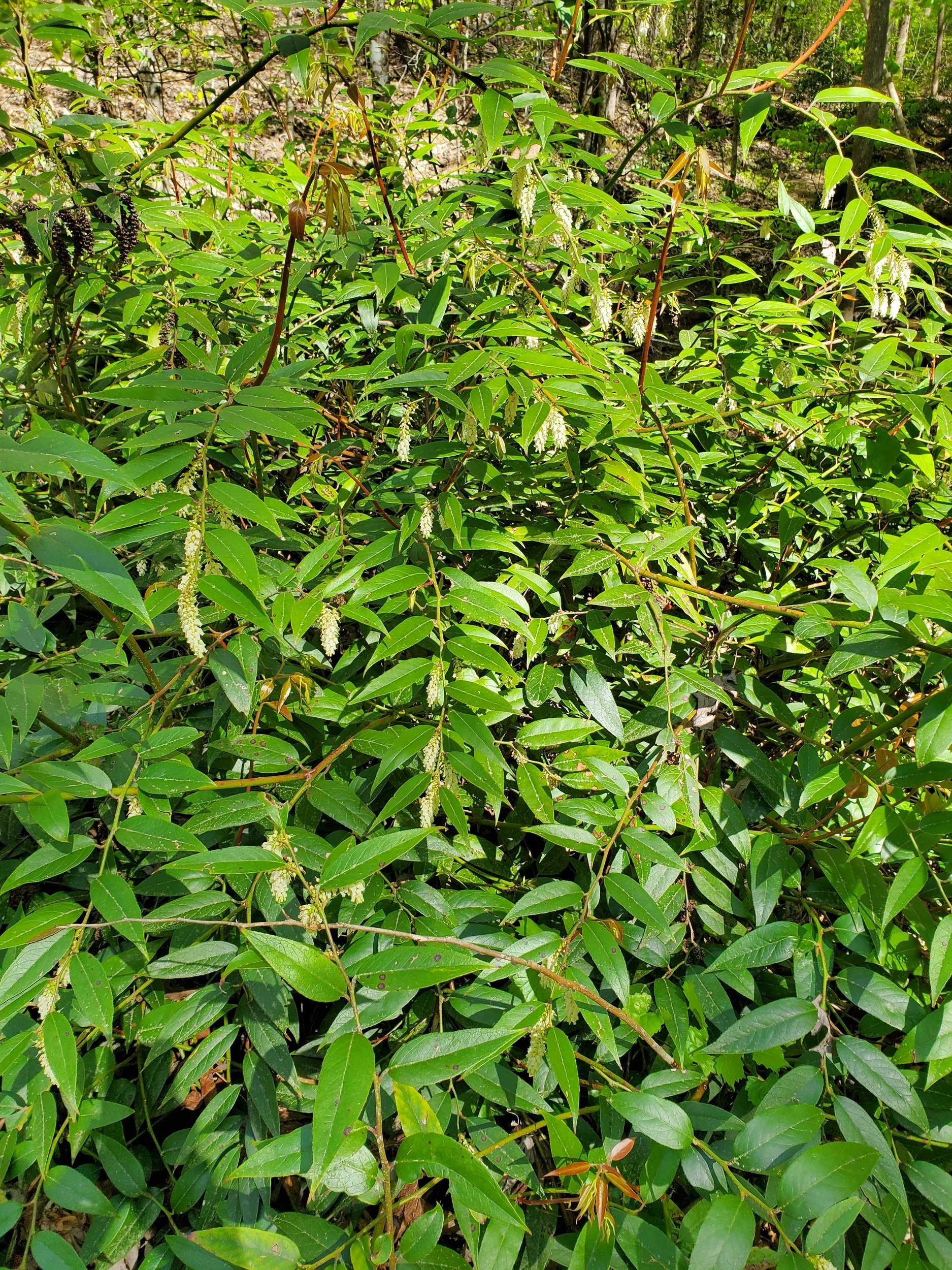It seems unfair that bright yellow ‘Florida Sunshine’ Illicium is getting landscape attention to the exclusion of other species, so I want to share the love with other Illicium that are garden worthy.
Illicium floridamum, pronounced il-LISS-ee-um flor-ih-DAY-num, is commonly called Florida Anise, Mexican Anise, or Purple Anise. It is native to the southeastern US and Mexico. Plants are cold hardy in zones 7 – 10. Florida Anise will attain heights up to ten feet when grown in rich soil. Leaves are thick, shiny, and evergreen. The texture and scent of the leaves deter damage from deer or rabbits. The crushed leaves smell a bit like licorice. Unfortunately, its lovely reddish flowers stink like stale fish. This does not deter pollinators, who flock to the blooms. Plants are supposed to flower in early spring, but I have seen several in flower this September, likely a byproduct of the abnormal weather this year.
Florida Anise loves damp shade. It is not drought tolerant. Leaves and flowers are toxic to humans and livestock. There are multiple cultivars available with different shades of flowers (pink to maroon); some have variegated foliage. There are several dwarf cultivars which are easier to incorporate into a foundation planting on the shady side of the house. Keep their water needs in mind when picking a location.
Illicium parviflorum, Yellow Anise, is more cold hardy and larger than the Florida Anise. It grows well in zones 6-9, and will reach up to twelve feet if left unpruned. It likes partial shade and can tolerate occasional drought. Its crushed leaves are fragrant like Florida Anise, but the pale yellow flowers do not smell bad. It is reputed to be deer tolerant. It can be used as a hedge or as a foundation plant where space allows. The plant is toxic; do not eat or allow pets and children to eat.
The aforementioned popular ‘Florida Sunshine’ is a cultivar of Illicium parviflorum. Its yellow foliage brightens a shady bed where another popular yellow shrub, ‘Sunshine’ Ligustrum, might suffer from low light. Too much sunshine results in bleached leaves or crispy leaf margins on the Anise. It is less deer resistant than the darker green leaf types.
A third Anise, Illicium henryi, is commonly called Henry Anise or Chinese Anise. It has been difficult for me to locate this shrub in local nurseries or online. This China native is shorter (only 6-8 feet) and will tolerate more sun than those above. Flowers are orange, pink, or red.









































